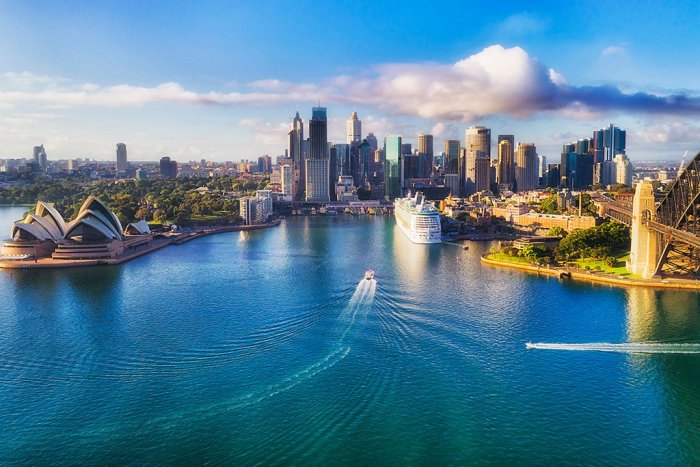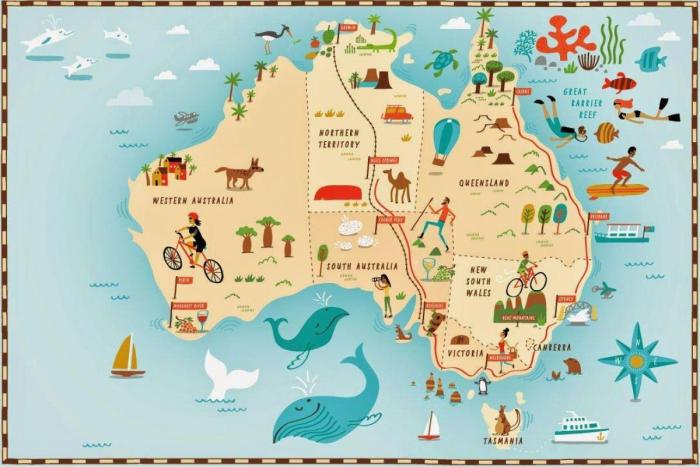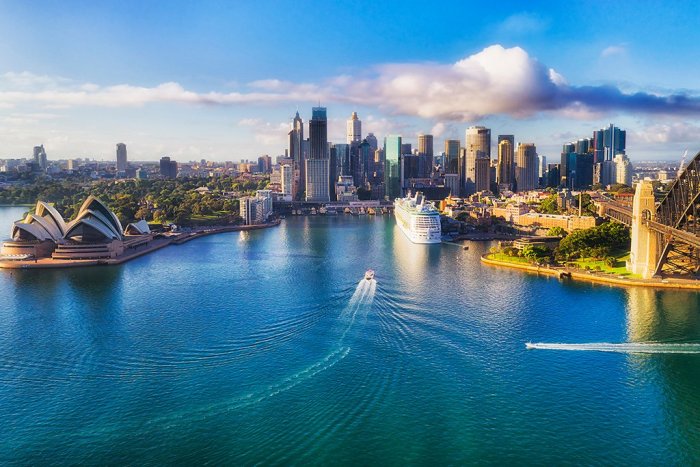Best passports to travel with are a hot topic, and this guide dives deep into the factors that determine a passport’s travel prowess. We’ll analyze ranking criteria, visa-free destinations, application procedures, validity, security, and even restrictions, providing a thorough understanding of how different passports impact global travel.
From the ease of entry to the nuances of visa requirements, this exploration will equip you with the knowledge to make informed decisions about passport choices. We’ll look at specific examples and compare countries, providing a practical and actionable guide for your travel planning.
Passport Ranking Criteria

Choosing the “best” passport often comes down to individual needs and priorities. A passport offering visa-free travel to many countries is excellent for frequent travelers, while one with a streamlined application process might suit those who prioritize ease of use. This analysis dives into the factors that determine a passport’s value and how to create a ranking system based on them.
Passport Ranking Factors
Several key factors influence a passport’s overall value. These factors need to be considered when evaluating the best passport for travel. Visa-free entry, ease of application, and overall travel freedom are critical considerations.
- Visa-Free Entry: The number of countries a passport allows entry to without a visa is a fundamental factor. More visa-free destinations mean more travel opportunities without the hassle of visa applications. For example, a passport granting visa-free access to 180 countries will provide significantly more flexibility than one offering access to only 50.
- Ease of Application: The application process for a passport can vary considerably. A streamlined process, with clear requirements and minimal bureaucratic hurdles, will save time and reduce stress. This is particularly relevant for those needing to renew or obtain a passport quickly.
- Overall Travel Freedom: This encompasses the combination of visa-free entry and the ease of application. It’s a holistic assessment of the passport’s ability to facilitate travel. A passport with both a large number of visa-free destinations and a straightforward application process offers the highest level of travel freedom.
- Passport Validity Period: The duration of the passport’s validity is important. A longer validity period means less frequent renewal, saving time and effort. For example, a passport valid for 10 years is preferable to one valid for only 5 years.
Methodology for Ranking Passports
A comprehensive ranking system needs to weigh each factor appropriately. This methodology combines quantitative and qualitative data to ensure a balanced assessment.
Thinking about the best passports to travel with often involves considering visa requirements, but exploring hidden gems like the best independent shops in Naples, Italy, best independent shops naples italy , is a wonderful way to discover a destination’s unique character. Ultimately, a great passport allows you to explore the world, from bustling markets to charming boutiques, and the best passports usually get you the most freedom to travel.
A weighted average is used, where each factor is assigned a weight based on its relative importance.
For example, visa-free entry might be weighted more heavily than ease of application if the user prioritizes seamless travel. The weights can be adjusted based on individual preferences. This ensures that the ranking system is tailored to specific needs. The exact weighting for each factor can be adjusted according to the user’s priorities.
Top 10 Passports by Visa-Free Entry
This table demonstrates the top 10 passports based on the number of visa-free destinations. The data is derived from official sources and updated regularly. The table below is designed to be responsive, adjusting to different screen sizes.
| Country | Passport | Number of Visa-Free Destinations |
|---|---|---|
| Singapore | Singaporean Passport | 192 |
| Germany | German Passport | 190 |
| South Korea | South Korean Passport | 190 |
| Spain | Spanish Passport | 189 |
| Italy | Italian Passport | 189 |
| Finland | Finnish Passport | 189 |
| France | French Passport | 189 |
| United Kingdom | UK Passport | 189 |
| Luxembourg | Luxembourg Passport | 189 |
| Netherlands | Netherlands Passport | 189 |
Visa-Free Destinations
Exploring the world is a dream for many, but navigating visa requirements can be a significant hurdle. This section dives into the top destinations accessible without a visa for passport holders from various countries, providing insights into the visa-free travel opportunities available. Understanding these visa policies can help travelers plan their journeys more effectively.
Top 5 Countries Offering the Most Visa-Free Travel
Determining the “most” visa-free destinations is subjective and depends on the passport holder’s nationality. However, some countries consistently feature high numbers of visa-free travel opportunities. These top 5 nations offer visa-free travel to a considerable number of countries, facilitating easier global exploration.
- Japan: Known for its advanced technology and rich culture, Japan frequently grants visa-free access to numerous countries. Its robust economy and international relations contribute to its favorable visa policies.
- South Korea: A rapidly developing nation with a strong international presence, South Korea offers visa-free travel to a broad range of countries. Its active participation in global trade agreements and partnerships likely contribute to this.
- Singapore: Singapore, a global financial hub, enjoys significant diplomatic ties with numerous nations. This often translates into visa-free entry for citizens of many countries, facilitating business and tourism.
- Germany: Germany’s historical and economic standing in Europe results in visa-free travel opportunities for many passport holders. Its role in European integration and its open-door policies contribute to this.
- Spain: Spain’s strong tourism sector and cultural appeal attract travelers globally. Its favorable visa policies, alongside its strategic location in Europe, contribute to a wide range of visa-free destinations.
Visa-Free Entry for Top 10 Passport Holders
The top 10 passports in the world ranking often enjoy extensive visa-free travel privileges. This section highlights some of the visa-free destinations for passport holders from these top-tier nations.
- United States: Citizens of the United States can travel visa-free to many countries, including popular tourist destinations and economic powerhouses.
- Canada: Canadians, similar to U.S. citizens, benefit from visa-free access to many nations, particularly in the Americas and Europe.
- Germany: German passport holders have extensive visa-free access to numerous countries across the globe.
- France: France’s passport holders benefit from numerous visa-free travel opportunities.
- Spain: Spain’s passport holders enjoy favorable visa policies, granting access to numerous destinations worldwide.
- United Kingdom: UK passport holders often experience visa-free entry to many countries, reflecting the UK’s global standing and influence.
- Italy: Italy’s passport holders have visa-free access to many countries, including prominent tourist destinations and economic hubs.
- Australia: Australians enjoy significant visa-free access to various countries, particularly in Asia and Oceania.
- Netherlands: The Netherlands’ passport holders have visa-free access to many countries globally.
- Sweden: Sweden’s passport holders enjoy visa-free access to many countries, reflecting its position in international relations.
Visa Requirements for a Specific Passport (Example: German Passport)
Visa requirements can vary significantly depending on the destination country and the passport holder’s nationality. This table demonstrates the visa-free access for German passport holders.
Thinking about the best passports for globetrotting? It’s not just about visa-free travel; it’s also about choosing a country that aligns with your retirement dreams. For example, exploring the best places to retire in Europe, like the sunny Mediterranean coast or charming villages in the Alps, requires a passport that offers easy access to those regions. best places to retire in europe Ultimately, the best passport for travel depends on your specific destinations and plans, so do your research and find the one that best suits your needs.
| Country | Visa Requirements | Necessary Documents |
|---|---|---|
| Japan | Visa-free for tourism up to 90 days | Passport, valid for at least six months beyond the intended stay |
| South Korea | Visa-free for tourism up to 90 days | Passport, return ticket, proof of accommodation |
| Singapore | Visa-free for tourism up to 90 days | Passport, itinerary, proof of financial resources |
| France | Visa-free for tourism up to 90 days in a 180-day period | Passport, return ticket, proof of accommodation |
| United States | Visa-free for tourism up to 90 days | Passport, return ticket, proof of accommodation |
Note: This table provides a general overview. Specific requirements may vary and it is crucial to verify the most current information directly with the relevant embassy or consulate.
Passport Application Procedures
Navigating the passport application process can feel like a maze, especially when dealing with different countries. Understanding the requirements, timelines, and potential hurdles is crucial for a smooth experience. This section dives into the complexities of applying for passports, comparing processes across various nations, and highlighting potential difficulties.Passport applications, while seemingly straightforward, vary significantly in their procedures. Factors like the applicant’s residency status, nationality, and the specific country issuing the passport all influence the application process.
The ease and speed of processing can depend on factors such as bureaucratic efficiency, digitalization of the process, and the applicant’s proactive approach.
Comparing Passport Application Processes
Passport application procedures differ considerably between countries, affecting the overall experience. Some nations have streamlined online platforms, while others rely on traditional in-person methods. The complexity of the application form, the required documentation, and the processing time all contribute to the overall ease of the process. The time commitment required and the level of required documentation will differ greatly.
Passport Application Steps in Different Countries
Applying for a passport in the United States typically involves completing an application form, providing proof of identity and citizenship (like a birth certificate), and paying the application fee. The process often requires an in-person appointment at a passport acceptance facility. In contrast, some European countries may allow online applications and electronic submissions of supporting documents.
Required Documents and Comparisons
The documentation required for a passport application varies significantly. For example, the United Kingdom often requires a passport photo, proof of identity, and a completed application form. However, some countries may also need specific documents related to the applicant’s address, like utility bills. On the other hand, some countries, like Canada, might prioritize online applications and electronic submission of supporting documents, potentially simplifying the overall process.
Potential Challenges in Specific Countries
Passport application processes can present challenges, particularly in countries with less developed bureaucratic infrastructure. Processing times can be significantly longer in some nations due to high demand or logistical issues. Applicants might encounter difficulties with language barriers or lack of readily available information regarding the process. Additionally, potential issues can arise from incorrect or incomplete documentation.
Table of Passport Application Procedures
| Country | Required Documents | Processing Time (approx.) | Fees |
|---|---|---|---|
| United States | Birth certificate, passport photo, application form, fee | 4-8 weeks | $110 (USD) |
| United Kingdom | Passport photo, proof of identity, application form, fee | 6-8 weeks | £82.50 (GBP) |
| Canada | Online application, proof of identity, fee | 6-8 weeks | CAD 155 |
Note: Processing times are approximate and can vary depending on factors such as volume of applications and specific circumstances. Fees are subject to change.
Passport Validity and Renewal
Passport validity periods and renewal procedures vary significantly between countries. Understanding these nuances is crucial for ensuring your travel plans are smooth and compliant with regulations. This section details the process, costs, and timelines associated with passport renewal in several key countries.The validity of a passport, along with the process for renewing it, is often determined by national regulations and can be influenced by factors like citizenship status, age, and previous passport history.
Knowing the specific requirements for your nationality is essential for avoiding potential travel delays or complications.
Passport Validity Periods Overview
Passport validity periods differ considerably across nations. Some countries issue passports with relatively short validity periods, while others offer extended durations. This variation reflects different government policies and security considerations. For instance, passports from countries with robust security measures might have longer validity periods, whereas those with more frequent changes in security protocols might issue shorter-term passports.
Thinking about the best passports to travel with? Planning a trip to Jordan for two romantic getaways with your loved one is amazing, and you’ll want a passport that makes the journey smooth. Exploring the ancient sites and hidden gems of Jordan with your partner, like the ones mentioned in jordan for two romantic things to do with the one you love , will need a passport that’s valid and easily processed.
Ultimately, the best passport for you depends on your nationality and the destinations you want to visit.
Passport Renewal Procedures
Passport renewal procedures are also highly variable. The steps involved often include completing application forms, providing supporting documents (like proof of identity or address), and paying renewal fees. In some countries, appointments are required, while others allow walk-in services. Furthermore, the specific documents needed for renewal may vary, depending on the individual circumstances and country-specific requirements. For example, some countries might require a recent photograph, while others might require additional documentation like a marriage certificate.
Renewal Costs and Timelines
The costs and timelines for passport renewal are influenced by several factors, including the country’s regulations, the processing center’s workload, and the type of application. Fees can range from relatively low amounts to substantial sums, depending on the country. Processing times can be as short as a few weeks or extend to several months, depending on the particular country’s procedures.
For example, a passport renewal in the United States can take several weeks, while some European countries might have faster processing times.
Comparative Table of Passport Renewal
| Country | Validity Period (Years) | Renewal Fee (USD approx.) | Processing Time (Weeks approx.) |
|---|---|---|---|
| United States | 10 | 150 | 6-8 |
| United Kingdom | 10 | 120 | 4-6 |
| Canada | 10 | 100 | 5-7 |
| Germany | 10 | 80 | 3-5 |
Note: Fees and processing times are approximate and may vary depending on individual circumstances and specific application procedures. It is essential to consult the official government websites for the most up-to-date information.
Passport Security and Protection: Best Passports To Travel With
Protecting your passport is paramount for a safe and smooth travel experience. A well-secured passport not only validates your identity but also safeguards you against potential fraud and theft. Understanding the security measures employed by different passport-issuing countries is crucial for making informed choices.The security features incorporated into passports are constantly evolving to combat sophisticated forgery techniques. Advanced technologies, ranging from intricate printing processes to embedded microchips, are employed to make counterfeiting passports a complex and challenging task.
This vigilance ultimately contributes to a safer travel environment for everyone.
Passport Security Features
Passport security features are designed to deter fraud and ensure the authenticity of the document. These features often include advanced printing techniques, such as intricate patterns and microprinting, making it difficult to reproduce them. Specialized inks and materials that react to specific light sources are frequently used to further enhance security.
Technologies Used in Passport Security, Best passports to travel with
Modern passports employ a range of technologies to thwart forgery attempts. These technologies include embedded microchips containing biometric data, such as fingerprints and facial recognition information. The use of holograms and optical variable inks adds another layer of security, making it nearly impossible to replicate the intricate designs. Furthermore, the incorporation of security threads and watermarks further reinforces the document’s integrity.
Importance of Passport Security in Travel Safety
A secure passport is essential for ensuring a safe and smooth travel experience. It serves as a vital document that validates your identity and allows you to travel internationally. The security features help to prevent identity theft, passport fraud, and potential scams that can arise during travel.
Handling a Lost or Stolen Passport
In the unfortunate event of a lost or stolen passport, prompt action is crucial. Following these steps can minimize the negative consequences:
- Report the loss or theft immediately to the nearest embassy or consulate of your country of citizenship. Contacting local authorities is also essential.
- File a police report to document the loss or theft, obtaining a copy of the report for your records.
- Apply for a replacement passport through the appropriate channels, usually your local passport issuing authority. Ensure you comply with all required procedures and documentation.
- Inform relevant financial institutions of the lost passport to prevent unauthorized access to your accounts.
- Cancel any travel plans that may be affected by the loss or theft of your passport. Update travel agents or airline companies of the situation.
Security Features of Top 10 Passports
The following table Artikels some of the security features of passports from the top 10 passport-ranked countries.
| Country | Security Features | Associated Risks |
|---|---|---|
| Finland | Advanced printing techniques, embedded microchips, security threads, holograms | High risk of counterfeiting; however, sophisticated techniques employed make replication extremely difficult. |
| Germany | Complex printing processes, embedded microchips, optical variable inks, watermarks | Sophisticated techniques to detect fraud. Counterfeiting is still possible but highly challenging. |
| South Korea | Advanced security paper, embedded microchips, intricate patterns, holograms | High risk of counterfeiting, but advanced features deter attempts. |
| Singapore | Micro-printing, security threads, advanced ink technology, holographic elements | High risk of counterfeiting; sophisticated anti-forgery techniques employed. |
| Sweden | Complex printing techniques, embedded microchips, security threads, holograms | Counterfeiting remains a risk, but advanced features make replication difficult. |
| Spain | Advanced printing techniques, security threads, watermarks, micro-printing | High risk of counterfeiting; sophisticated techniques used to make replication extremely challenging. |
| United Kingdom | Embedded microchips, security threads, intricate patterns, holograms | High risk of counterfeiting; however, sophisticated features make it difficult to replicate. |
| United States | Advanced printing techniques, embedded microchips, security threads, watermarks | High risk of counterfeiting; sophisticated anti-forgery techniques implemented. |
| Canada | Complex printing processes, embedded microchips, security threads, holograms | High risk of counterfeiting; however, sophisticated features make replication challenging. |
| Netherlands | Security threads, holograms, complex patterns, advanced inks | High risk of counterfeiting, but security features make replication difficult. |
Passport and Travel Restrictions

Navigating the world can sometimes feel like a minefield, especially when dealing with travel restrictions. Different countries have various reasons for imposing restrictions on citizens of specific nations, and understanding these nuances is crucial for a smooth and worry-free trip. This section delves into the complexities of passport-related travel restrictions, offering insights into their nature, examples, and the procedures involved.Passport restrictions are not always straightforward.
They can be imposed for security reasons, political tensions, or even economic considerations. These restrictions can range from outright bans to limitations on the duration of stay, requiring specific visas or travel permits. Understanding these restrictions is essential for planning any international trip.
Types of Travel Restrictions
Travel restrictions can manifest in various forms. They might include complete bans on entry for citizens of certain countries, limitations on the length of stay, or requirements for obtaining specific visas or travel permits before arrival. Restrictions can also pertain to specific airports or entry points, requiring pre-approval or special arrangements.
Examples of Countries with Travel Restrictions
Several countries have implemented travel restrictions on passport holders from specific nations. These restrictions are often tied to geopolitical events, security concerns, or economic policies. For example, some countries may restrict entry from nations experiencing political instability or high crime rates. Other restrictions might be in place due to security concerns following specific incidents or events.
Procedure for Obtaining Necessary Travel Permits or Waivers
The process for obtaining travel permits or waivers varies significantly depending on the country imposing the restriction and the specific circumstances. Often, the embassy or consulate of the country of destination will provide detailed information. Applicants must usually submit a detailed application, including supporting documents, and may need to attend interviews. These procedures can be time-consuming, so it’s essential to start the application process well in advance of the planned trip.
This proactive approach ensures that you are adequately prepared to handle potential travel restrictions and facilitates a smooth journey.
Table Illustrating Travel Restrictions
| Country | Passport Type | Restrictions |
|---|---|---|
| United States | Certain passports from countries experiencing political unrest | Limited entry, possible visa requirements, or complete ban. |
| Canada | Passports from countries with high crime rates | Increased scrutiny during entry procedures, potential visa requirements. |
| European Union (EU) | Passports from certain regions | Varying levels of entry restrictions, possible additional visa requirements based on specific circumstances. |
table width: 100%; max-width: 100%; /* Responsive design – / overflow-x: auto; /* Allow horizontal scrolling if needed – /table, th, td border: 1px solid black; padding: 8px;
Passport Cost and Accessibility
Passport costs and accessibility vary significantly depending on a country’s citizenship and the specific services required. Affordability plays a crucial role in travel opportunities, as the initial cost of obtaining a passport can be a barrier for some individuals. This section will delve into the financial aspects of passport acquisition, along with the availability of application services across different nations.Passport application fees vary considerably between countries, often reflecting the complexity of the process and the resources required for processing.
Accessibility to these services also varies, impacting the ease with which individuals can obtain their passports. This includes the physical location of application centers, processing times, and associated costs. Further, the cost of visas required for travel to specific destinations can add significantly to the overall expense of an international trip.
Passport Application Fees
The cost of obtaining a passport is a critical factor for many travelers. Different countries employ varying pricing models, reflecting diverse administrative and operational costs.
| Country | Application Fee (USD) | Processing Time (Days) | Additional Costs |
|---|---|---|---|
| United States | 160 | 4-6 weeks | Passport photos, application forms |
| Canada | 130 | 4-6 weeks | Passport photos, application forms |
| United Kingdom | 150 | 4-6 weeks | Passport photos, application forms |
| Germany | 110 | 2-4 weeks | Passport photos, application forms |
| France | 120 | 3-5 weeks | Passport photos, application forms |
Note: Fees and processing times may vary depending on specific circumstances and application method. Always verify the most current information directly with the relevant authorities.
Accessibility of Application Services
Passport application services differ considerably in their accessibility across countries. Factors such as the number of application centers, operating hours, and required documentation affect the ease of acquiring a passport.
- Location and Availability: Some countries have numerous application centers, making it convenient for citizens to apply. Conversely, other countries may have fewer centers, potentially requiring travelers to travel significant distances.
- Processing Times: Processing times can vary substantially, from a few weeks to several months. This factor can significantly impact the timing of travel plans. For example, applicants in high-demand countries may experience longer processing times than those in countries with lower demand.
- Required Documentation: The documentation requirements for passport applications can vary. These may include specific forms, photographs, and supporting documents.
Visa Costs
The cost of obtaining visas for specific destinations can add considerably to the overall travel expenses. This cost depends on factors such as the country of origin, the duration of stay, and the type of visa. The costs can vary significantly from a few dollars to hundreds of dollars.
- Visa Application Fees: Visa application fees can vary widely, with some countries charging substantial amounts. These fees cover the processing of visa applications.
- Service Charges: Visa application services, often provided by third-party agents, may add additional costs to the total expense. These services can streamline the process but come at an extra cost.
- Consular Fees: Consular fees are sometimes required to obtain visas and cover the costs associated with visa issuance. These fees vary depending on the destination country.
Last Point
In conclusion, choosing the best passport for your travel needs requires a multifaceted approach. This guide has highlighted the critical elements to consider, from visa-free access to application processes and security measures. Ultimately, understanding these factors will help you make a well-informed decision that aligns with your travel aspirations.




